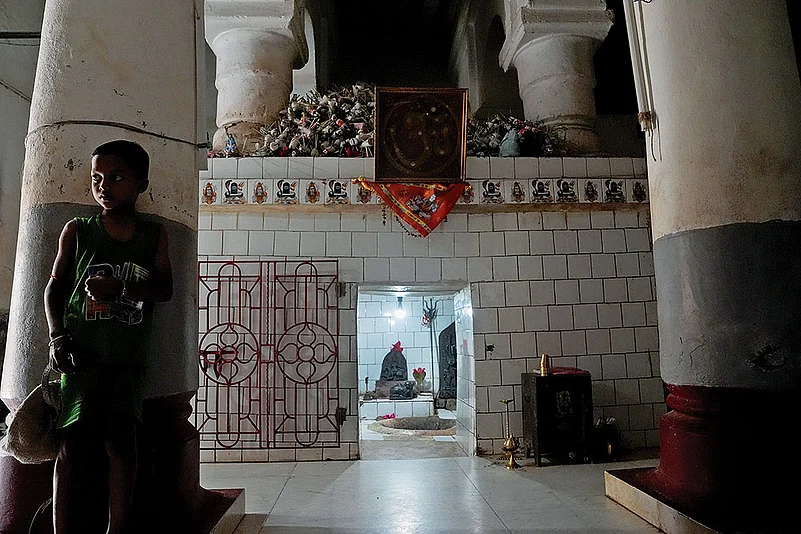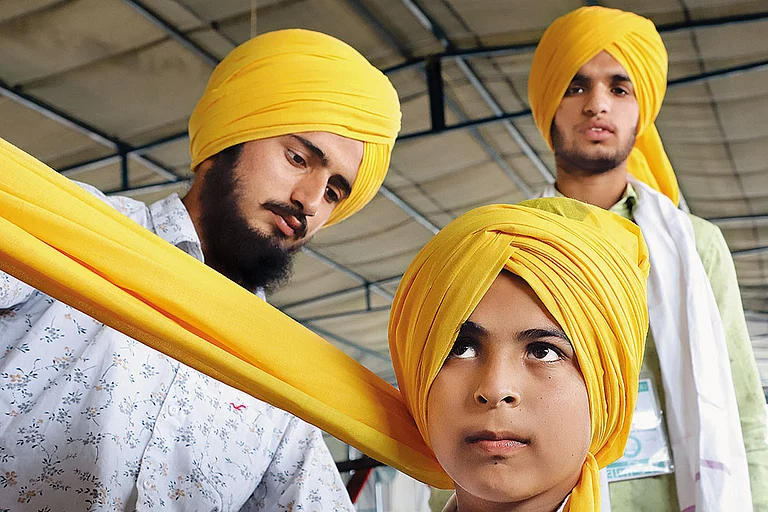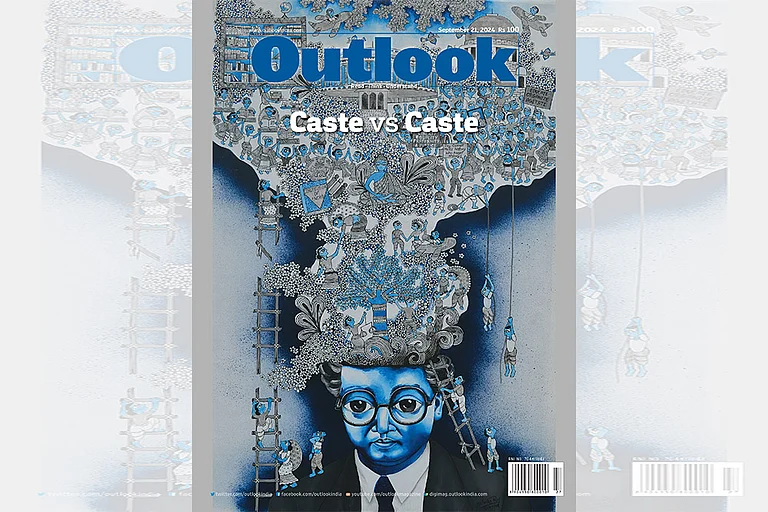Chamars are not Hindus, Soumen Dey asserts with high confidence. The man in his 20s is agitated. He is a Kayastha. The administration, by allowing Chamar caste members to enter their Shiva temple and worship their deity has ruined the sanctity of their village라이브 바카라 age-old traditions, he complains.
“Their forefathers used to skin dead cows. Only Muslims deal with dead cows. A Hindu will never take anything but milk from a cow,” says Dey, explaining their objections to the entry of Chamars in their religious festivities. Others in the Kayastha crowd that had gathered around nod in approval.
It라이브 바카라 a hot and humid evening in early April. The atmosphere is tense at Bairampur village in Nadia district of West Bengal, roughly 170 km north of Kolkata. The leaves on the trees are as still as the water in the pond. The Kayasthas feel restless. They are one of Bengal라이브 바카라 three upper caste groups, besides the Brahmins and the Baidyas. In Bairampur, they form the majority. The Chamars, also called Muchis, are a Scheduled Caste (SC) group considered ‘low’ even by some other SC groups.
Less than a fortnight ago, on March 20, the administration deployed police forces to ensure the Chamar caste members’ entry into the local Shiva temple, from which they had been prohibited so far. Now, as the Gajan festival in the last week of Choitro (April 8-14), the final month in the Bengali calendar, nears, the prospect of the Chamar community라이브 바카라 participation in the festival intensifies the Kayastha discomfort.
The Calcutta High Court라이브 바카라 March 17 instructions to the police to ensure that no one in Bairampur is barred from entering the temple and participating in the Gajan left the village라이브 바카라 Kayasthas feeling helpless and let down. Gajan celebrates the devotion to Lord Shiva. Being a bhawkto (devotee) or sanyasi during the Gajan calls for a lot of hardship. One has to live a hermit라이브 바카라 life for a week, fast during the day, have fruits for dinner, stay at the temple premises, bathe in the river or pond, and above all, self-inflict wounds by piercing oneself with hooks. Sharing the same temple premises with the ‘impure’ Chamars will spoil it all.

“You may behead people, but you cannot eliminate caste differences,” says Sanyasi Dutta, a middle-aged farmer, sitting bare-chested on a cane-made macha (raised platform) next to the pond. The Kayastha crowd around him, comprising both men and women, agrees. “We can’t go against the law. But if the administration forcefully brings them to the Gajan, we, the Kayasthas, may stay away,” he says.
The Shiva temple at the centre of the controversy stands a few metres away. It라이브 바카라 a tiny, non-descript structure—just a flat-roofed room capable of accommodating two to three dozen people. The room shares its eastern wall with a similar room used as a Kali temple. The Kali temple is out of the controversy. The Chamars do not visit it. A few hundred metres from this humble twin temple, the Muchi community has a Kali temple in their neighbourhood that is much grander, adorned with a large Shiva statue on its decorated triangular top.
Every para or neighbourhood has multiple small temples. But the whole village has only one Shiva temple and it is there that the Gajan takes place. The bolan folk songs are performed throughout the week. Shmashan Khela—where devotees dress up like ghosts and dance with human skulls—is a key attraction.
Bairampur is a Hindu village in Kaliganj block, surrounded by those where Muslims dominate the demography. The medium-sized village has 1,374 voters and a population of over 4,000. The Kayasthas are over 250 families, while there are about 200 Muchi families, about 70 Namasudra families and 20-odd families belonging to other castes. It is located just 50 km north of Nabadwip, the birthplace of Chaitanya ‘Mahaprabhu’, the 15th-century Vaishnavite spiritual leader and social reformer who famously denounced and challenged caste-based hierarchies.
The village has separate neighbourhoods for the Kayasthas and SC communities like the Namasudras and the Chamars. The Namasudras, one of the more empowered SC groups in West Bengal, live between the Kayastha and the Chamar neighbourhoods. The Shiva temple stands at the border of the Kayastha and the Namasudra neighbourhoods. The Namasudras (here, the predominant surname is Haldar) are allowed to worship the Shiva Linga and participate in the Gajan. The Namasudras sound sympathetic towards the cause of the Muchis (here, surnames are Das, originally Ruidas).
At Chandrapur village of Katwa sub-division, many upper caste residents threatened to boycott the Dharmaraj temple if the administration tried to allow the Das families to enter it.
Inside a small community hall opposite the Kali temple in Das para, activists from the Samajik Nyay Mancha (social justice platform or SNM) are explaining to the Chamar caste members how the upper caste communities fooled them over the centuries to normalise out-casting them. The SNM, a wing of the Communist Party of India-Marxist CPI(M), played a key role by helping them approach the Calcutta High Court.
“Untouchability and caste-based discrimination are illegal,” says one of the speakers, trying to boost the morale of the predominantly Muchi community audience. He narrates the stories of the anti-caste struggles waged by 19th-century social reformers Jyotiba and Savitribai Phule of Maharashtra and Harichand Thakur of Bengal and 20th-century anti-caste warriors like B. R. Ambedkar and E. V. Ramasamy Periyar.
“No matter what means they adopt to pressurise you to back out, those who want to participate in the Gajan must do so. We will keep the administration under pressure to ensure they carry out their duties. Do not forget, you have the court라이브 바카라 order,” Kalyan Gupta, who heads the SNM라이브 바카라 Nadia district unit, tells the gathering.
West Bengal, home to India라이브 바카라 second-largest Dalit population after Uttar Pradesh, has traditionally enjoyed the reputation of being more or less free from the curse of caste-based discrimination and untouchability. The lack of overt casteist display has been attributed to social movements led by Chaitanya Mahaprabhu, the radicalism of ‘Bengal Renaissance’, the Dalit social movements of Harichand and Guruchand Thakur in the 19th century and the Leftist movement of the 20th century, among other factors.
The Leftist leaders believed their class-oriented struggle would uplift the marginalised communities through economic empowerment. They were so confident of the disappearance of caste-based discrimination from Bengal that two Left MPs, Jyotirmoy Basu and Geeta Mukherjee, told the Mandal Commission in 1980 that caste was irrelevant and a thing of the past in Bengal. Indeed, going by records, despite having one-tenth of India라이브 바카라 SC population, only one in 500 cases of caste-based discrimination and atrocities registered in India over the past few years concern Bengal. Evidently, the discrimination is not overt. Yet matrimonial advertisements stand testimony to the significance of caste.
Reports of practices of untouchability have surfaced time and again, such as in Pratichi Trust라이브 바카라 survey in the early 2000s. However, they have largely been treated as stray incidents. The CPI(M) launched the SNM only after losing power in West Bengal in 2011. But the spring of 2025 has opened the lid on many of Bengal라이브 바카라 casteist secrets.
The Muchi community라이브 바카라 battle at Gidhagram village in Katwa sub-division of Purba Bardhaman district for entry into the Giddheshwar Shiva temple on the occasion of Shiv Ratri (February 24) triggered a chain of reactions. Despite the administration라이브 바카라 assurances, the upper castes did not allow them. The two communities clashed at least twice over the next two weeks. This news encouraged neighbouring Nadia라이브 바카라 Bairampur residents. Finally, the Muchi families entered the Gidhagram temple on March 12, followed by Bairampur on March 20. As the news spread, Muchi community members from more villages started asserting their right to worship—Billeswar, Gangatikuri, Jhamotpur, Nirole, Agordanga, Dhandalsa, Rasui, Kasutia, Keuguri, Dattabati, Sitahati, Dattabatia, Naliapur, Balutia and Baharan villages in the Ketugram area of Purba Bardhaman alone. Such practices have also come to light from Bhitagram in Bardhaman 1 block, Chandrapur in Katwa, Aushgram in Aushgram block, Nasigram in Bhatar—all in Purba Bardhaman district; Simulia and Jalsuti in Salar and Erera of Bharatpur in Murshidabad district; and Bamonia at Indus in Bankura district.
“Whatever protest or assertion of constitutional rights has taken place so far is only from villages where the Muchi or Chamar community are about 100 families strong. Where they are less numerous and economically weaker, they dare not protest. They fear facing a boycott by upper caste people, their main employers,” says Rishi Ram Prosad, a 33-year-old schoolteacher. He says that the practices of untouchability exist mostly in places away from Kolkata. He is the general secretary of the Ravidasiya Mahasangha, an umbrella organisation of Muchi-Chamar community members founded in 2019 to mobilise the community. It represents the interests of people having surnames such as Rabidas, Ruidas, Ruhidas, Rishidas, Bain, Mahaldar, Charmakar, Chamar and Muchi.
While the SNM played a role in mobilising the Chamar community members at Gidhagram and Bairampur, the Rabidasiya Mahasangha has been playing the key role in taking up the matters of most other villages.

At Billeswar village in the Ketugram block of Purba Bardhaman district, Lakshmikanta Ghosh, a middle-aged farmer, stands caught between traditions and laws. “The administration says stopping anyone from participating in pujas or festivals is illegal, but excluding the Das community is a centuries-old tradition,” Ghosh says, looking upset. Citing an example of traditions, Ujjwal Dayasinh, a member of the sebait (temple manager) family of the Billwanath temple, informs that people from the Goala, Kamaar, Dhopa and Chhutor castes are not allowed to live in the village. He cannot say why, but the residents agree not to sell their land or property to anyone from these castes.
Billeswar, too, has its neighbourhoods arranged on caste lines. The Muchi para has a small temple where they organise pujas of goddesses Durga, Lakshmi, Saraswati and Annapurna. Two than (cemented platforms) are dedicated to goddesses Kali and Manasa. The Kayastha and Sadgope (general caste) neighbourhood has private and community temples of Kali and Jagaddhatri. However, the village has only one Shiva temple where the only Gajan festival takes place. “We are no less religious than them. But when Lord Shiva라이브 바카라 bull is taken out for a tour of the village at the end of the Gajan, the Das para is excluded,” says Subhas Das, an agricultural labourer.
Roughly 13 km north of Billeswar, Gangatikuri village remains tense. Jadab Das, a local journalist who led the Das community라이브 바카라 initiatives to claim rights to enter the centuries-old Shiva temple and participate in the Gajan festival, fears a backlash, including physical attacks, from aggrieved upper caste members. Over 200 Das community members have petitioned the local police station to ensure Jadab라이브 바카라 security.
“In our village, the Brahmins are not opposing our participation; it라이브 바카라 a section of the Chashha Sagdope community objecting to it,” Jadab said. The Brahmins are only a few families, while the Sadgopes—traditionally associated with farming—are the majority. At Chandrapur village of Katwa sub-division, many upper caste residents threatened to boycott the Dharmaraj temple itself if the administration forcefully tried to allow the Das families to enter it and participate in the Gajan festival.
One of the intriguing aspects of this conflict is that in almost all cases, it is around Shiva temples. Locals attribute it to the fact that building temples for any other deity is easier, as one only needs to get an idol built. The Muchis, due to the discrimination they faced, built their own temples dedicated to Kali, Durga and Manasa in their neighbourhoods. In many villages, every caste라이브 바카라 neighbourhood has its own Durga pujas. However, a Shiva temple requires a Shiva Linga, which is not as abundant as idols. This is one of the reasons why Shiva temples in these villages are relatively older. Often, a village has only one Shiva temple, and that라이브 바카라 where the Gajan takes place.
According to writer Kumar Rana, a scholar on Dalits in Bengal, the Chamars and the Doms are among the least empowered Dalit communities and they face such discrimination in pockets of southern Bengal districts like Bardhaman, Hooghly, Birbhum and Bankura. Such discrimination is linked to village-level economic dominance. Though the Chamar community has been socio-politically mobilised through strong sustained movements in northern India, especially in Uttar Pradesh, such movements never had any impact on Bengal, he says. He thinks it is possible that northern India라이브 바카라 movements have finally started influencing those in Bengal.
Some locals attribute the new consciousness to work-related migration. A large number of Muchi or Chamar caste members in these villages work as agricultural labourers, while many in the young generation migrate in search of jobs, mostly as daily-wage earners. It is this migrant workforce that has raised the issue of discrimination over the past few years. The COVID-19 lockdown played a role.
In 2021, many of these migrant workers were stranded in their villages. Some of them wanted to participate in the Shiv Ratri and Gajan festivals. At Gidhagram, they submitted a memorandum to the administration, but it could not be resolved due to stiff resistance from the upper castes. At Bairampur, the panchayat called a public meeting ahead of the 2021 Shiv Ratri and Gajan, but the Kayasthas strongly objected to breaking the tradition. The experience at Billeswar was similar. This year, the Gidhagram conflict opened the floodgates.
(Reported from Nadia and Purba Bardhaman, West Bengal)
Snigdhendu Bhattacharya is a journalist, author and researcher


















